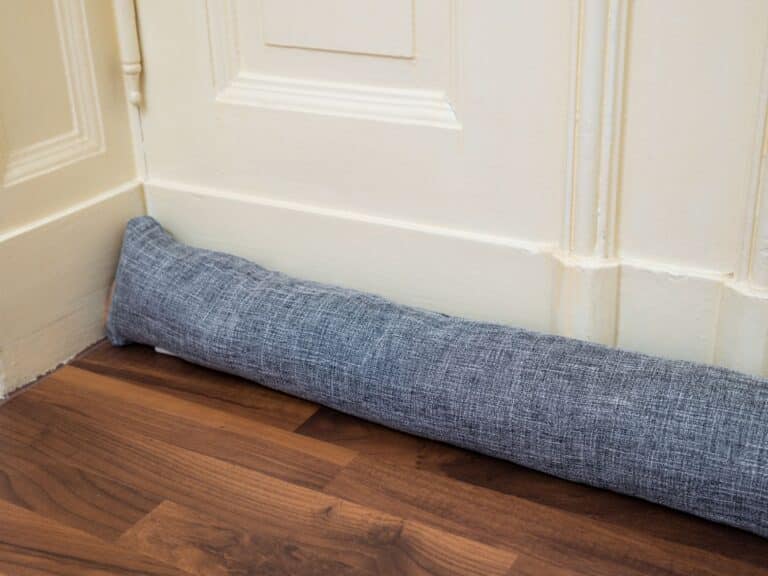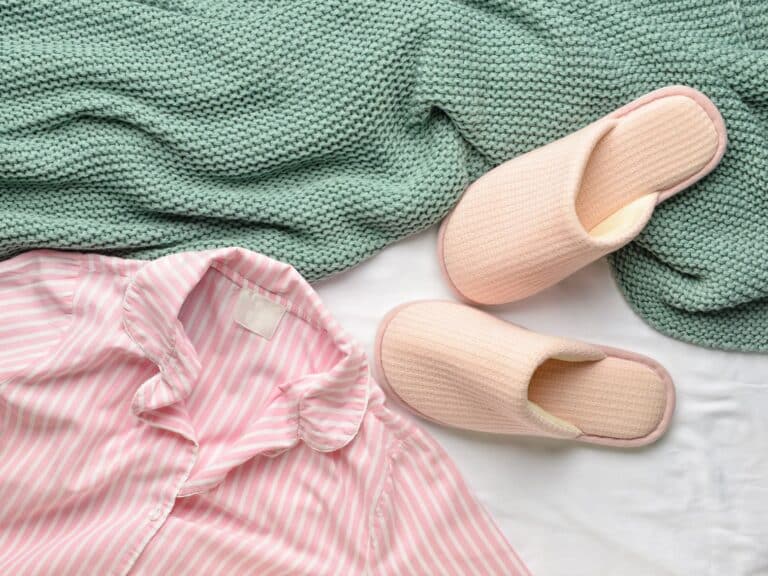5 Best Fabrics For Children’s Clothing
Some of the links below are affiliate links. As an Amazon Associate I earn from qualifying purchases. This means that, at zero cost to you, I will earn an affiliate commission if you click through the link and finalize a purchase.
A beautiful cloth with a nice design may end up not serving its purpose if it is not made with the right fabric. As a result, fashion designers tend to prioritize the selection of the right fabrics before sewing.
When it comes to children’s clothing, the type of fabrics used is of high priority, because with the best fabrics you can avoid clothing allergies and make perfectly comfortable clothes.
Contrary to popular belief, the best fabrics are not necessarily ones with the best designs or styles or most expensive. Instead, they are comfortable to wear, suitable for the skin, and go with all weather conditions.
With that in mind, I wanted to cover what to be looking for, what you need to know when shopping for fabric for children’s clothing and my personal favourites to use.
Can You Use Any Fabric To Make Children’s Clothing?
No, you cannot use any fabric to make children clothing. Making children clothing involves getting the right fabrics before proceeding to sew the desired style.
Because some fabrics can cause allergies, severe suffocation, or wear out easily, you need to be careful of what to choose. It is why you need to consider certain things before selecting the right fabrics for children’s clothing.
What To Consider When Choosing Best Fabrics for Children Clothing
Here are things to consider when choosing the best fabrics for children clothing:
Organic or synthetic
Children have delicate skin; hence, the need for fabrics that do not irritate their skins.
Generally, Organic fabrics are suitable and compatible with the skin unlike inorganic ones. In addition, Synthetic fabrics usually cause allergies as the skin can react to the chemicals used to make them.
As a result, organic fabrics are more suitable for children’s clothing. Similarly, organic fabrics like cotton, wool, linen, etc., should be your best bet for making kids clothing.
Loosely or tightly woven
How the fabric is woven is crucial in selecting the best fabrics. For instance, Loosely woven fabrics tend to get punctured easily as they cannot withstand rough usage.
On the other hand, tightly woven fabrics are more durable and can withstand roughness when children play. Therefore, you should check out how loosely or tightly woven a fabric is before making your choice.
Lightweight or Heavyweight
The weight of the fabric is also important when choosing the best fabrics for children’s clothing. While some fabrics can be as light as a feather, some are heavy and may be difficult for kids to pull around everywhere.
Everyone knows that kids tend to move around a lot as they are filled with energy. As a result, they need clothes that help them move along swiftly. This is why lightweight fabric like satin is suitable for children’s clothing.
Adaptability
Certain fabrics cannot adapt to some conditions. Thus, children’s clothing has to be inflammable to prevent burns or melting when kids are close to a fire source. Moreso, Fabrics for children’s clothing have to be flexible to allow the rigorous movements that kids can use it for, like while sleeping.
The best Children’s clothing should be adaptable to different climatic conditions. On that note, Cotton and satin are best for summery or warm weather, while wool and corduroy come in handy during cold periods.
Durability
Kids grow fast and can easily outgrow their outfits; hence, the need for durable fabrics that can last as long as possible. Stretchable fabrics like knit and elastic are the most suitable for children’s clothing.
Denim is also a good choice when it comes to fabrics that rarely go bad and can last for as long as possible. Some fabrics fade easily, so it is best to choose fabrics with the same base color as their prints since they are more resistant to fading.
Comfortability
Comfort is a key factor in determining the best fabrics for children’s clothing. Therefore, soft fabrics with less complicated linings are best for children as they provide maximum comfort.
The 5 Best Fabrics for Children Clothing
Based on the factors mentioned above, the following are the five best fabrics for children’s clothing:
Cotton
Cotton is known as one of the best fabrics for children clothing as it is soft, tightly woven, lightweight and long-lasting. It is a natural-made fabric and has been used traditionally for children’s clothing.
It is highly suitable for children’s clothing because it allows air to pass through it, absorbs and retains moisture, is highly chemically resistant and does not cause allergies. More often, Cotton soothes and protects even the most sensitive skin; hence, it is recommended for those with delicate skins.
This fabric can withstand any weather condition and is suitable for all seasons. A child’s clothing made from 100% cotton fabric is durable and can withstand any intensity of roughness. Such clothes are easy to clean and machine washable.
Stains are also easily removed from cotton fabrics, making it suitable for children as they can make a lot of mess with food or while playing. Finally, cotton is also inexpensive and comes in a variety of colors, making it a fit for both functional and fashionable purposes.
Linen
Another natural, soft, tightly woven and long-lasting fabric suitable for children’s clothing is Linen. Its properties are similar to that of cotton as it allows air to pass through well, absorbs and retains moisture, and does not cause allergies.
Thin linen is light on children’s skin and provides softness and comfort. It is highly durable and has sun protecting properties. This is what makes it a suitable fabric for the summertime.
Linen is machine washable and simple to clean. However, that’s not all. The fabric is also affordable, comes in several colors, and can be used for both fashionable and functional purposes.
Linen is known for its creases especially when stretched in various directions. Why this is is not a bad thing, it also means that there will be lots of ironing.
Fleece
Fleece is a synthetic, polyester-based fabric for making children’s clothing. While organic fabrics are best for children’s clothing, Fleece is as suitable and advantageous as its organic counterparts.
It is durable, easy to wash, dries quickly, retains its form, does not cause allergies and has heat retaining properties. This is why the fabric is FX a largely used for marking children’s sportswear and outerwear.
Fleece also absorbs and retains moisture, is machine washable and provides softness and comfort. It is suitable for outdoor activities and can withstand roughness. The fabric is suitable for winter or colder weather as it keeps children warm.
Interestingly, Fleece can be used for both functional and fashionable purposes.
Satin
Satin fabric is an artificial weave made from other natural fabrics like silk and cotton or synthetic materials like polyester, rayon or nylon. It has a characteristic glossy, lustrous and smooth look, and it is often compared to silk because it is breathable, soft and fine in texture.
This fabric is also durable and has low thermal conductivity, that is, it will maintain the body’s temperature.
Satin is machine washable, does not wrinkle and is highly durable. It is one of those fabrics that do not age, as it retains not only its form but its look and shiny nature. It is suitable for summer periods due to its heat retaining properties.
Satin can be used for special outfits like dresses or frocks. It can withstand roughness and be used for both fashionable and functional purposes.
Wool
Wool is a natural fibre obtained from the fleece of sheep, lamb, goat and other hairy mammals. It has such a smooth and fine texture, which makes it pleasant to touch.
Wool is one of the best fabrics for making children’s clothing because of its softness and heat retaining properties. It is suitable for outdoor occasions and wintertime. The fabric is breathable, easy to clean and machine washable.
Wool is durable, does not wrinkle and does not cause allergies. When the right wool is used, it can withstand roughness and be used for both fashionable and functional purposes.
What Are The Soft Fabrics You Can Use To Make Children’s Clothing?
There are several soft fabrics out there. However, the most common and suitable ones you can use to make children’s clothing are:
- cotton
- cashmere, and
- fleece.
These fabrics are delicate on the skin, provide softness and are long-lasting. They are the perfect go-to fabrics if you desire soft children’s clothing.
What Are The Worst Fabrics For Children’s Clothing?
While you may focus on the best fabrics for children’s clothing, there are also the worst ones you should totally avoid.
These fabrics are considered the worst for children’s clothing because they are not durable, free or comfortable. They can also be suffocating, reactive or not able to withstand the roughness that may accompany its usage.
Here are some of the worst fabrics for children’s clothing:
Silk
Silk is a soft, comfortable and natural fabric, and would be suitable for children’s clothing; however, it is not. This is because the fabric is delicate and needs delicate handling.
Moreso, children’s clothing are meant to withstand roughness, but silk is not. It can tear easily and would not accommodate the mess that kids tend to do on their clothes.
Fake Fur
Fur is soft, fine and thick hairy fabric, and the difference between original and fake fur is the shedding. Fake fur tends to shed since they are synthetically produced, unlike their original silk.
Besides, the fibres from the fabrics can be picked up, swallowed or inhaled by kids when they are not being supervised. This may lead to suffocation or choking.
Therefore, it is best to avoid using such fabric for children’s clothing. It is also the reason toys made from fake furs are not suitable for kids below three years.
Vinyl
Vinyl is a plastic fabric that is commonly used in making bags, upholstery and fire protective clothing. They are highly unsuitable for children’s clothing as they are synthetically manufactured and usually cause allergies.
Vinyl fabrics can cause rashes on the skin of a child when worn. Though it can be used as decorative embellishments on children’s clothing, it should never be used as the clothing itself.



